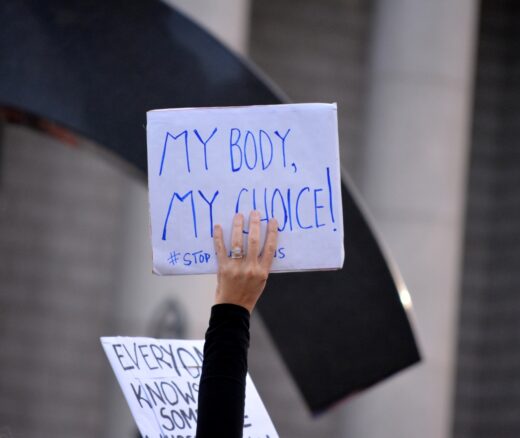
Integrated Care Plans Didn’t Boost Medicaid Enrollment for the Poorest Seniors
Chart of the Day: Medicare-Medicaid Plans—Created to Streamline Care for Dually Eligible Individuals—Failed to Increase Medicaid Participation in High-Poverty Communities
Blog Post

Every year, at least $60 billion in public benefits goes unused nationally. That means tax relief, health insurance, and help with food, housing, and transportation never reach people they are intended for.
Public benefits are associated with better health, lower costs, and community growth, so hospitals want to connect patients with them.
Two studies by LDI Fellows looked to emergency departments (EDs) to find people who were eligible for public benefits. By law, hospitals must provide emergency services, regardless of patients’ health insurance status. This makes EDs an opportune place to find people who qualify for programs such as Medicaid but are not enrolled.
Penn medical student Ella Eisinger and LDI Senior Fellow Elinore Kaufman answered questions about a hospital program that connects people to health insurance who were admitted through the ED. In addition, LDI Senior Fellow Austin Kilaru discussed helping ED patients receive benefits such as tax credits, rent rebates, and assistance with utility payments.
Kaufman: When people are admitted to the hospital from the ED, it’s a rare moment when the hospital’s and patient’s financial motivations align; both want the hospital to be paid for the services without the patient getting a huge bill.
Physicians want to make the most of every health care encounter. Sometimes, we can do a little more, like reassure patients who worry about payment that we might be able to get them insurance.
Kilaru: I talk about social needs with ED patients on every shift. A recent patient who lost insurance couldn’t afford medications. I was able to work with our pharmacist to help her, but we can’t have doctors scrambling to find solutions for every patient. We need system-level solutions to connect people to insurance and financial help.
Kilaru: Our pilot study of about 200 adult Philadelphia residents found that it’s ok to ask people about public benefits while they wait in the ED with non-life-threatening issues. It’s worthwhile, too. People reported receiving one benefit, on average, but were eligible for an average of four more. Most commonly, these were tax credits, home energy payment assistance, property tax or rent rebates, and the Supplemental Nutrition Assistance Program (SNAP). People welcomed our help applying for benefits (but after their hospital visit).
Eisinger: We studied data from Penn Medicine’s program to help uninsured inpatients who were admitted from the ED get insurance. We confirmed that the hospital ED linkage program works—75% of the 3,880 uninsured adults in our study got insurance.
We wanted to understand what happens next. Do patients get necessary health care after they leave the hospital, including preventive services that might lead to better health? We found that in the year after hospitalization, people who got insurance through the program were 14% more likely to have a primary care visit than people who had Medicaid when admitted. People who remained uninsured, though, were 29% less likely to have a primary care visit.
Kaufman: Overall, health care use in the year after hospitalization was higher for people who got insurance through the program than for people who remained uninsured, but lower than for people who already had Medicaid. This suggests that insurance is necessary for getting care but it’s not sufficient. We need to improve processes for insurance enrollment and for getting primary and other post-acute care.
Eisinger: We’re interviewing patients and the financial counseling staff who assist them to learn why some people get insurance and primary care and some don’t. We’re hearing from people facing ED bills because they were taken off insurance when they lost a job, or turned 26 years old and couldn’t be on parental plans. People are losing Medicaid as policies to keep them insured during the pandemic expire.
We also have a paper publishing soon about emergency Medicaid enrollment after a traumatic injury and long-term health care utilization.
Kilaru: We recently completed a randomized controlled trial with 160 people that tested ways to connect ED patients with benefit enrollment specialists at Benefits Data Trust, a community organization. We screened patients for six months at Penn Medicine EDs. If they were eligible for benefits, they received a paper flyer about contacting Benefits Data Trust, and some also received text message reminders.
The goal of our study was to see which approach helped more people connect with the enrollment service and apply for benefits. Our preliminary results suggest that text messages may be an effective way to connect people with benefit counselors.
Eisinger: Only 40% of hospitals do ED linkage so we need more of these programs. The time and effort to get insurance can extend beyond the initial hospitalization, so financial assistance programs must be well-resourced. We need better ways to keep patients on insurance, like continuous eligibility.
After getting insurance, patients may need primary- and specialty-care referrals. So much happens during a hospital stay that can get lost in the shuffle, so referrals could be streamlined and automated.
Other opportunities include working with partners such as methadone and other community clinics that are also financially motivated to have insured clients. They’re already good at reminding them to renew their insurance.
Kaufman: We’re studying if people who get insured through the Penn Medicine ED linkage program get care from other regional systems. That’s another opportunity to build partnerships.
Enrolling in insurance requires a lot of documents. Reducing that burden or having combined applications for multiple programs would help. Medicaid requires regular renewal. Automating that could prevent people from losing insurance.
Kilaru: ED visits are an opportunity to engage people in longer-term care—both medical and nonmedical—to address drivers of acute illness that brought them to the ED in the first place.
A common misperception is that people use the ED only if they don’t have insurance. In fact, many people have insurance but may not fully engage with primary and preventive care. We can help people make the connections necessary to improve their physical—and potentially financial—health. These types of interventions seek to increase the value of ED visits and help people where they are.
The study, “Eligibility of Emergency Department Patients for Public Benefit Programs,” was published on March 25, 2024 in Academic Emergency Medicine. Authors include Joseph Harrison, Grace McDermott, Erica L. Dixon, Michael Mehta, Aliza Haider, Charles Rareshide, Lauren Southwick, Anish K. Agarwal, Raina M. Merchant, and Austin S. Kilaru.
The study, “Health Care Use Among Patients Retroactively Insured via a Hospital-Based Insurance Linkage Program,” was published on March 14, 2024 in the Journal of General Internal Medicine. Authors include Ella C. Eisinger, Angela T. Chen, Omar I. Ramadan, Anna U. Morgan, M. Kit Delgado, and Elinore J. Kaufman. The authors acknowledge funding from Penn’s Institute for Translational Medicine and Therapeutics.


Chart of the Day: Medicare-Medicaid Plans—Created to Streamline Care for Dually Eligible Individuals—Failed to Increase Medicaid Participation in High-Poverty Communities
Research Brief: Shorter Stays in Skilled Nursing Facilities and Less Home Health Didn’t Lead to Worse Outcomes, Pointing to Opportunities for Traditional Medicare

How Threatened Reproductive Rights Pushed More Pennsylvanians Toward Sterilization

Abortion Restrictions Can Backfire, Pushing Families to End Pregnancies

They Reduce Coverage, Not Costs, History Shows. Smarter Incentives Would Encourage the Private Sector
Research Brief: Less Than 1% of Clinical Practices Provide 80% of Outpatient Services for Dually Eligible Individuals